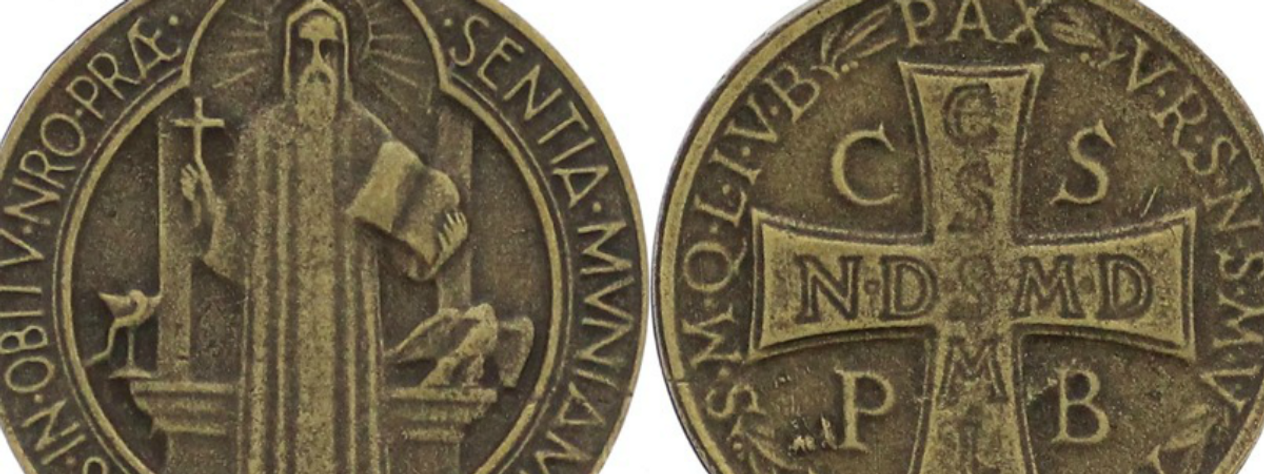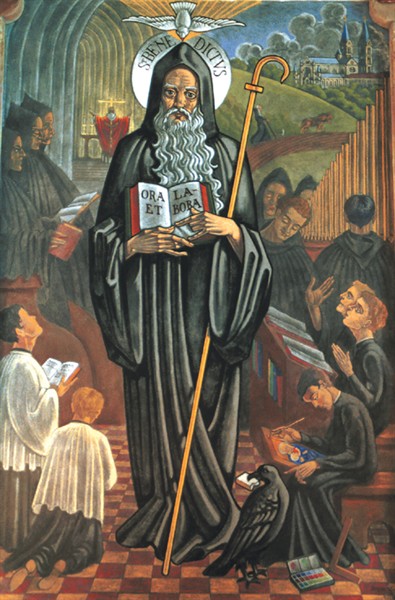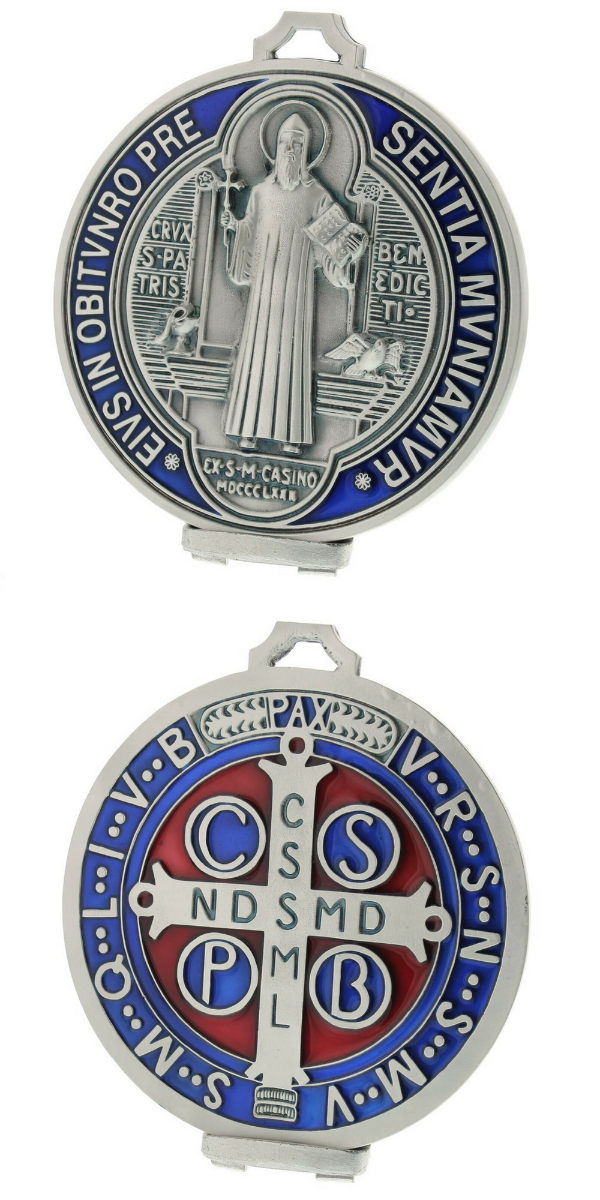The Exorcism Formula & Blessing Ritual of the St. Benedict Medal
Jul 10, 2017 by Gretchen Filz
St. Benedict of Nursia (d. 547 A.D.) was an incredibly important saint for the Church, most notably because of the organization and stability he brought to monastic life in the earliest centuries of Christianity, enabling the Church to lay the foundation of Western culture and civilization following the collapse of the Roman Empire.
During his life he was known to work many miracles through the power of the Holy Cross. Among these included his heroic flight from temptations and miraculous escapes from traps set to kill him. His most famous miracle was rendering ineffective a poisoned cup that was offered to him, simply by making the Sign of the Cross over it. The Medal of St. Benedict is based on this tradition of the saint's power over the wiles of the Devil.
Because of his uncommon sanctity and miraculous powers, men gathered around St. Benedict as disciples. He paved the way for these men to consecrate themselves to a secluded, disciplined, and communal life of prayer, work, fasting, and penance dedicated solely to the worship of God.
So, it is not hard to see why Saint Benedict was often a specific target of the Devil.
To firmly establish the men who desired to imitate his strict way of life, St. Benedict founded twelve monasteries, including the world-famous Monte Cassino, and gave them a rule of life to live by, the Rule of St. Benedict, to increase their spiritual effectiveness. These were the Western Church's first monks.
Because of the structure and discipline he brought to the monastic life, Benedict is heralded as the founder of Western Monasticism. He is the patron saint of many causes, especially known for his intercession against evil, including poison, temptations, and witchcraft. He is also the patron of monks, students, farmers, and all of Europe.
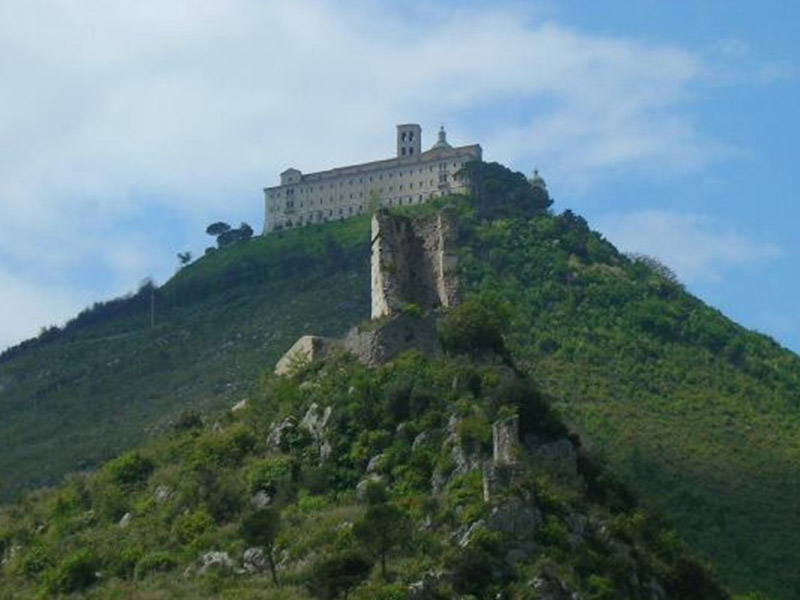 Monte Cassino Abbey, Italy
Monte Cassino Abbey, Italy
The Medal of St. Benedict as we know it today is the Jubilee medal that was first struck in 1880 by the Archabbey of Monte Cassino to commemorate the fourteenth centenary anniversary of St. Benedict’s birth. The meaning of the symbols used on the medal were at one time a mystery until an ancient manuscript was discovered, as described below:
According to the Catholic Encyclopedia,
“It is doubtful when the Medal of St. Benedict originated. During a trial for witchcraft at Natternberg near the Abbey of Metten in Bavaria [a Benedictine monastery established in the 8th century] in the year 1647, the accused women testified that they had no power over Metten, which was under the protection of the cross. Upon investigation, a number of painted crosses, surrounded by the letters which are now found on Benedictine medals, were found on the walls of the abbey, but their meaning had been forgotten.
Finally, in an old manuscript, written in 1415, was found a picture representing St. Benedict holding in one hand a staff which ends in a cross, and a scroll in the other. On the staff and scroll were written in full the words of which the mysterious letters were the initials. Medals bearing the image of St. Benedict, a cross, and these letters began now to be struck in Germany, and soon spread over Europe. They were first approved by Benedict XIV in his briefs of 23 December, 1741, and 12 March, 1742.”
This—combined with the many accounts of the Saint triumphing over traps the Devil set for him during his lifetime—is how the symbols on the St. Benedict medal became propagated as a form of protection against, and exorcism of, evil.
Below is a guide to the meaning of the symbols on the front and back of the Jubilee Medal of St. Benedict.
FRONT OF THE MEDAL
Above the chalice and the raven in the center, on either side of the image of St. Benedict:
Crux Sancti Patris Benedicti
(Cross of the Holy Father Benedict)
Words around the perimeter of the medal:
Ejus in obitu nro praesentia muniamur
(May we at our death be fortified by his presence)
BACK OF THE MEDAL
The initials on the cross in the center:
C. S. S. M. L. — N. D. S. M. D.
Crux Sacra Sit Mihi Lux — Non Draco Sit Mihi Dux
(The Holy Cross be my light — Let not the dragon be my guide)
The circles by the four corners of the cross:
C S P B
Crux Sancti Patris Benedicti
(Cross of the Holy Father Benedict)
The initials around the perimeter:
V R S N S M V — S M Q L I V B
Vade Retro Satana, Nunquam Suade Mihi Vana — Sunt Mala Quae Libas, Ipse Venena Bibas
(Step back, Satan, do not suggest to me thy vanities — Evil are the things thou profferest, drink thou thy own poison)
And at the top:
Pax
(Peace)
BLESSING OF ST. BENEDICT MEDALS
St. Benedict Medals are the only medals that have their own special blessing in the Roman Ritual. Below is the powerful rite of blessing (long form) for St. Benedict medals, which any priest can pray.
____________
Priest: Our help is in the name of the Lord.
All: Who made heaven and earth.
I cast out the demon from you, creature medals, by God the Father almighty, who made the heavens and the earth and the seas and all that they contain. May all power of the adversary, all assaults and pretensions of Satan, be repulsed and driven afar from these medals, so that they may be for all who will use them a help in mind and body; in the name of the Father almighty, of Jesus Christ, His Son, our Lord, of the Holy Spirit, the Advocate, and in the love of our Lord Jesus Christ, who is coming to judge both the living and the dead and the world by fire.
All: Amen.
Lord, have mercy. Christ, have mercy. Lord, have mercy. Our Father (the rest inaudibly until:)
P: And lead us not into temptation.
All: But deliver us from evil.
P: Save your servants.
All: Who trust in you, my God.
P: Let us find in you, Lord, a fortified tower.
All: In the face of the enemy.
P: The Lord will give strength to His people.
All: The Lord will bless His people with His peace.
P: Lord, send us aid from your holy place.
All: And watch over us from Sion.
P: Lord, heed my prayer.
All: And let my cry be heard by you.
P: The Lord be with you.
All: May He also be with you.
Let us pray.
Almighty God, lavish dispenser of every good, we humbly ask that by the prayers of St. Benedict you pour out your blessing on these sacred medals, impressed with letters and signs ascribed to you. Let all who will wear them with hearts intent on good works deserve to obtain health of mind and body, your holy grace, and the indulgences that have been granted to us. And may they escape by your merciful help all attacks and wiles of the devil, and finally appear in your presence sinless and holy; through Christ our Lord.
All: Amen.
Let us pray.
Lord Jesus Christ, who willed in redeeming the whole world to be born of a Virgin, to be circumcized, rejected by the Jews, betrayed with a kiss by Judas, bound in chains, crowned with thorns, pierced with nails, crucified between robbers, wounded with a lance, and to die at last on the cross; I humbly ask, by this your sacred passion, that you expel all attacks and wiles of the devil from the person who devoutly calls on your holy name, using these words and signs ascribed to you. May it please you to lead him (her) to the harbor of everlasting salvation, you who live and reign forever and ever.
All: Amen.
May the blessing of almighty God, Father, Son, and Holy Spirit, come upon you and remain with you forever.
All: Amen.
The priest sprinkles the medals with holy water.
____________
The St. Benedict medal is rich in meaning and a powerful sacramental for spiritual protection, and there are a variety of ways to use it. Continue reading How to Use the St. Benedict Medal.
You can shop all things St. Benedict here.
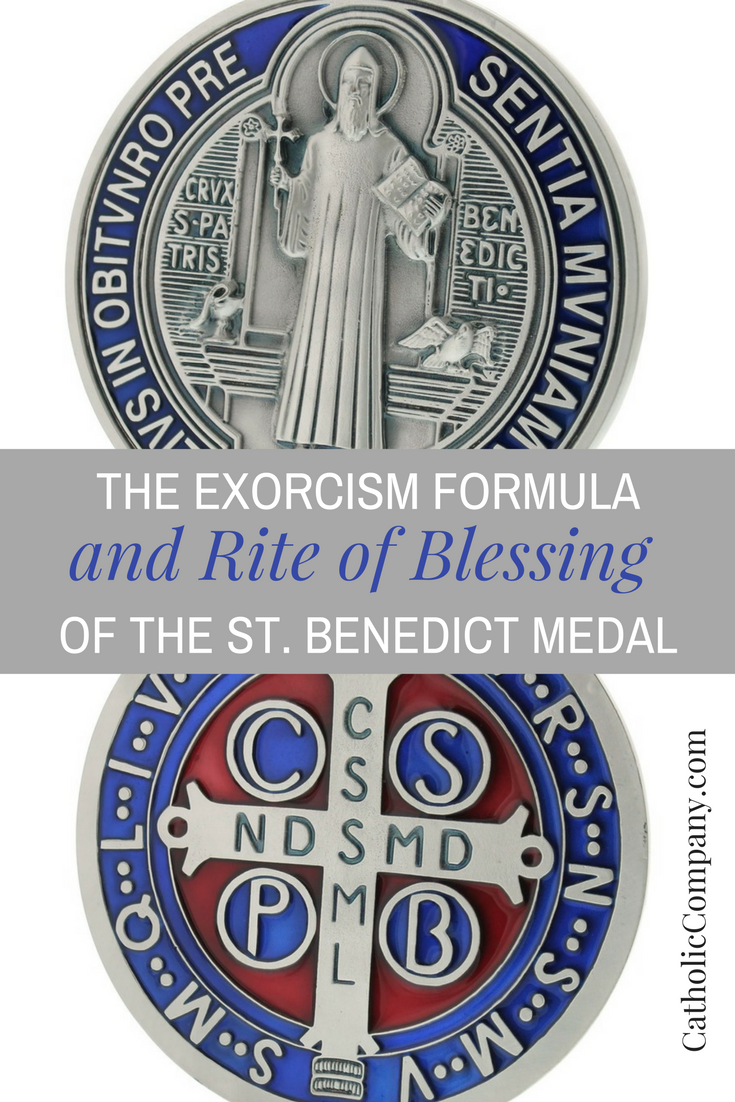
This article has been updated and was originally published in July 2014. © The Catholic Company





